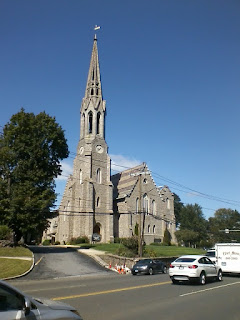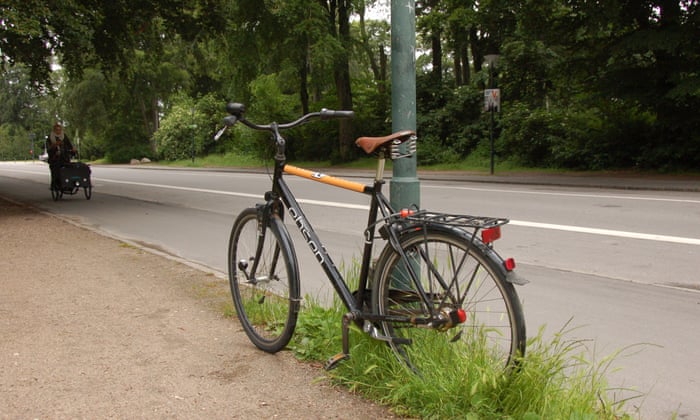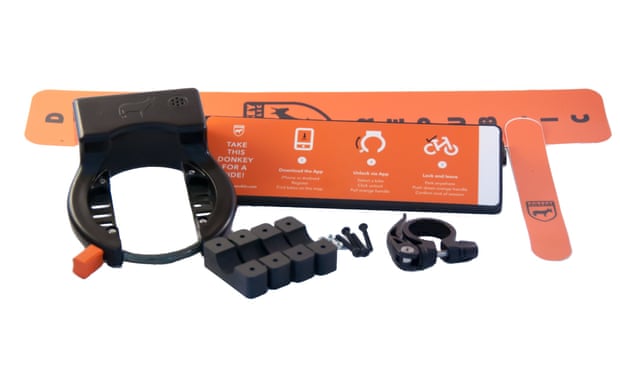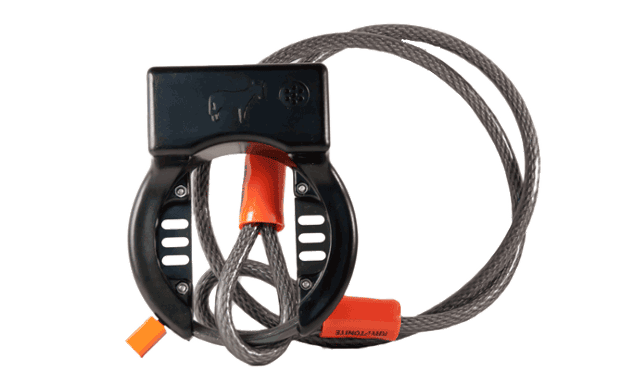The weather during the ride I took to Connecticut on Monday was a sign of Fall's impending arrival. Today, during--you guessed it--another ride to Connecticut, I saw yet another sign the season will soon be upon us:
This trail, part of the East Coast Greenway, connects Pelham Bay Park, City Island and Orchard Beach with Westchester County. Along the way, it passes by a horse riding academy, golf course and the shores of Long Island Sound before twisting its way through woodland that straddles the line between the upper Bronx and Pelham Manor.
Although the temperature was slightly higher (rising to 25C by mid-ride), it really didn't feel that way, in spite of the bright sunshine. As I mentioned in my post about Monday's ride, the days are growing shorter, so the ground and buildings aren't absorbing as much heat as they did even two or three weeks ago. But, perhaps more important, the wind was even more brisk: At times, it reached 40 KPH. And, yes, I was pedaling into it on my way up.
The wind didn't deter these folks who were enjoying the light and vistas of Mamaroneck Harbor:
Back to the subject of signs: When you ride, you see the kind I've mentioned as well as the ones posted on buildings. I hope this isn't a sign of things to come:
All right: The name of the bowling alley has nothing to do with firearms or survivalists. Rather, it's located near the intersection of Gun Hill (great name, huh?) and Boston Post Roads in northern Bronx. What amazes me is that the sign looks so pristine while keeping to the look of the 1950's or early 60's. I don't believe it's anyone's attempt at self-conscious irony: There are no hipsters in the neighborhood around it. (Most of the residents are Caribbean immigrants or their children; not long ago it was a blue-collar-to-middle-class Italian-American neighborhood.) I think life throws enough irony at those people.
Seeing such a sign on an absolutely beautiful and bright day, as Fall knocks at our door, is plenty or irony for me. I love it!
This trail, part of the East Coast Greenway, connects Pelham Bay Park, City Island and Orchard Beach with Westchester County. Along the way, it passes by a horse riding academy, golf course and the shores of Long Island Sound before twisting its way through woodland that straddles the line between the upper Bronx and Pelham Manor.
Although the temperature was slightly higher (rising to 25C by mid-ride), it really didn't feel that way, in spite of the bright sunshine. As I mentioned in my post about Monday's ride, the days are growing shorter, so the ground and buildings aren't absorbing as much heat as they did even two or three weeks ago. But, perhaps more important, the wind was even more brisk: At times, it reached 40 KPH. And, yes, I was pedaling into it on my way up.
The wind didn't deter these folks who were enjoying the light and vistas of Mamaroneck Harbor:
Back to the subject of signs: When you ride, you see the kind I've mentioned as well as the ones posted on buildings. I hope this isn't a sign of things to come:
All right: The name of the bowling alley has nothing to do with firearms or survivalists. Rather, it's located near the intersection of Gun Hill (great name, huh?) and Boston Post Roads in northern Bronx. What amazes me is that the sign looks so pristine while keeping to the look of the 1950's or early 60's. I don't believe it's anyone's attempt at self-conscious irony: There are no hipsters in the neighborhood around it. (Most of the residents are Caribbean immigrants or their children; not long ago it was a blue-collar-to-middle-class Italian-American neighborhood.) I think life throws enough irony at those people.
Seeing such a sign on an absolutely beautiful and bright day, as Fall knocks at our door, is plenty or irony for me. I love it!




















